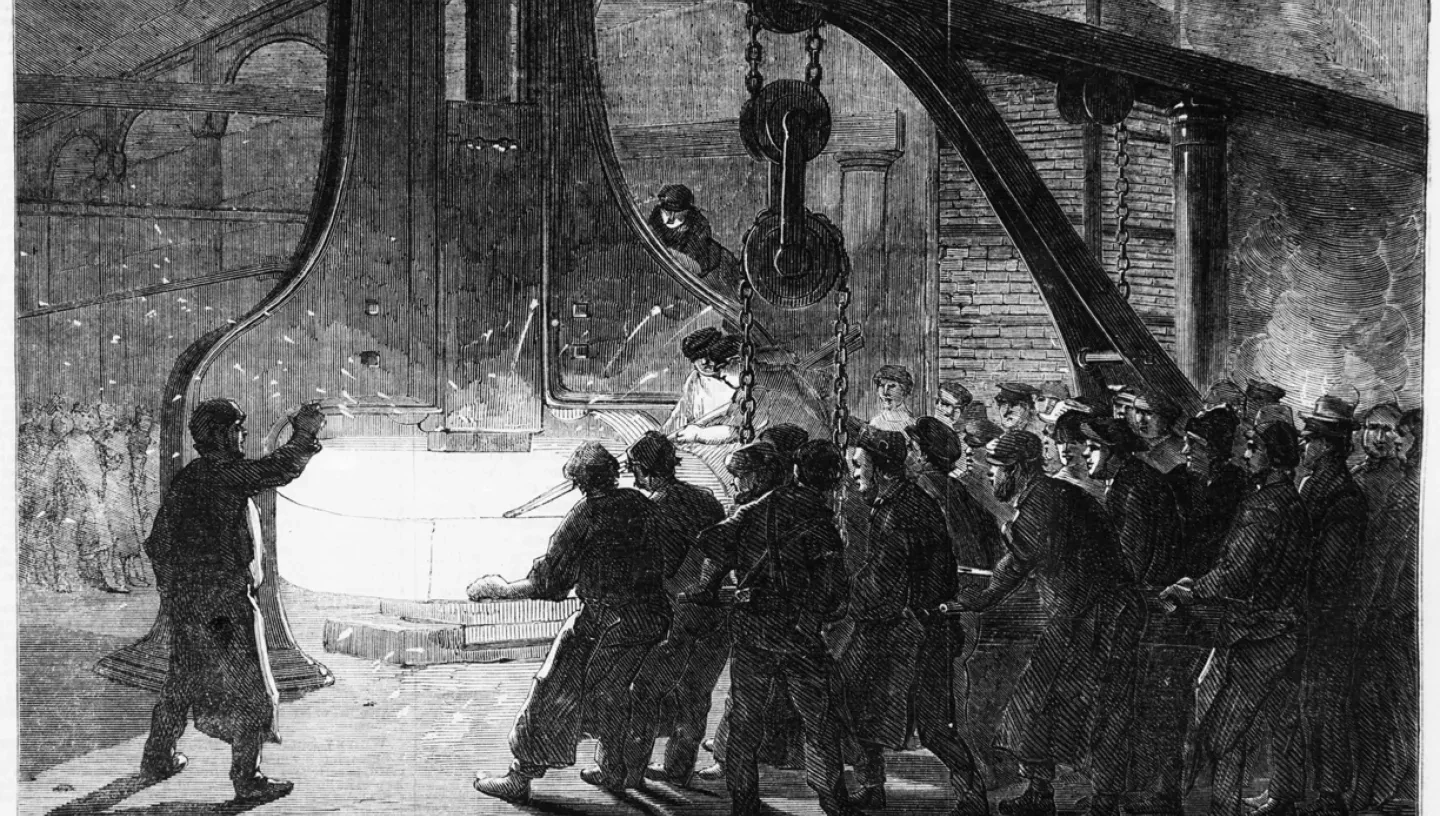
In the 17th and 18th centuries there were six Royal Navy Dockyards in England, at Deptford, Woolwich, Chatham, Sheerness, Portsmouth and Plymouth.
Deptford Dockyard
Henry VIII ordered the construction of Deptford and Woolwich dockyards so he could construct warships close to his home in Greenwich.
Deptford Dockyard was founded in 1513 and was the leading dockyard in the 16th to 18th centuries. It is associated with building vessels for Walter Raleigh and Frances Drake, as well as ship refits for the explorers Cook and Bligh and warships for Lord Nelson.
Deptford declined in use in the 19th century, due to the silting of the Thames. Its use was restricted to shipbuilding and distributing stores to other yards and fleets abroad. Deptford Dockyard closed in 1869.
Woolwich Dockyard
Henry VIII founded Woolwich Dockyard in 1512 to build his flagship Henri Grace a Dieu (Great Harry). The dockyard was particularly important during the 16th and 17th centuries, but it gradually declined due to limited space and the silting of the Thames.
By 1800 it was restricted to shipbuilding and refitting vessels. In 1839 a steam factory was established at Woolwich and the dockyard closed in 1869.
Chatham Dockyard
Established as a royal dockyard by Elizabeth I in 1567, Chatham Dockyard became important thanks to its strategic position on the River Medway, during the Anglo-Dutch Wars of the 17th and 18th centuries.
By the late 18th century it was superseded by Portsmouth and Plymouth when the main naval enemy became France, and the west coast of England became a defensive priority. The River Medway had also silted and navigation was more difficult.
When the yards at Deptford and Woolwich closed in 1869, Chatham again became important and remained so until 1983 when it closed. The site is now a museum, the Chatham Historic Dockyard Trust.
Sheerness Dockyard
Situated at the mouth of the River Medway, the dockyard was founded in 1665, initially for storing and refitting ships. In 1720, a second dry dock was built and it became a ship construction yard, mainly for fourth- and fifth-rate ships, chiefly in peacetime. Between 1815 and 1826 Sheerness was completely rebuilt, and in 1854 a steam yard was established. It closed in 1957.
Portsmouth Dockyard
Regarded as one of the oldest dockyards in the world, and still in operation today, Portsmouth Dockyard was established in 1495 by Henry VII and used throughout Henry VIII’s reign (1509–1547). It was then neglected until the English Civil War (1642–51) when new buildings were erected and permanent officers appointed.
Extension and improvements continued throughout the 17th and 18th centuries. This expansion, plus transfer of major naval operations to the western approaches, made Portsmouth the most important dockyard in the country from the mid-18th century.
By the 19th century it had trebled in size; the most notable additions being the Steam Basin, two locks, three docks and three basins. Expansion continued in the 20th century and the dockyard is still in use by the navy today.
Plymouth Dockyard
Plymouth Dock, known as Devonport Dockyard since 1824, was founded in 1690.
In wartime it maintained the Western Squadron – the Royal Navy squadron based at the western approaches of the English Channel – during the 18th century. In peacetime it built and repaired ships.
Its period of greatest expansion came when the Keyham Steam Yard was constructed north of the old yard, 1844–1853, and then extended between 1896 and 1907. The naval base is one of three still in operation today, alongside those in Plymouth and on the River Clyde.
There were also a number of naval out-ports in England and overseas yards, including Gibraltar, Halifax and Jamaica.
Find out more: